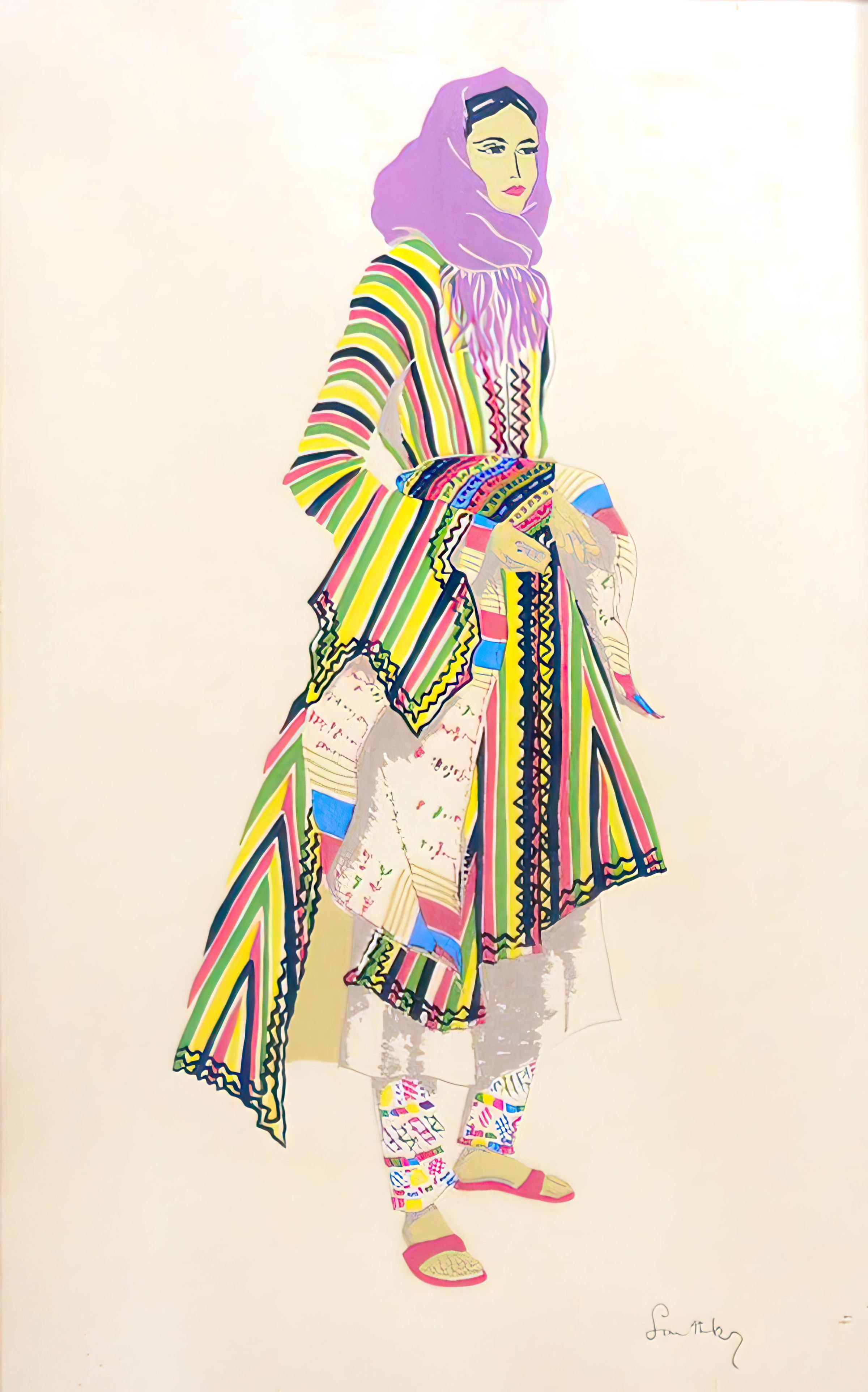Name/Title
"Arab Woman of Safsaf" (1957)Entry/Object ID
2021.012.004Description
Object 2012.012(1-6) is a six-part series of illustrations produced by Susan Southby, titled "Costumes of the Holy Land" and signed in pencil. The illustrations use pochoir (French: “stencil”), and is distinguished from ordinary stenciling by a highly refined technique of making fine limited editions of stencil prints. The six costumes reproduced by Southby were included among a collection of thirty or more traditional dresses worn by Palestinian girls at a pageant in Beirut, organized by the Women's Auxiliary of the United Nations Relief Works Agency for Palestine Refugees intended to raise funds for charity. Southby produced the illustrations in the 1940s, published and distributed the drawings in 1953 by Dar Al-Maaret of Beirut, and the accompanying publication, also titled "Costumes of the Holy Land" was published in 1953 (1st edition) and 1957 (2nd edition).
Southby illustrated 3,080 copies by hand, the first 250 bear the numbers "One" to "Two Hundred and Fifty", written in words, and the drawings are signed in pencil by the artist and mounted, ready for framing. The succeeding 2,750 bear the numbers 251-3,000 written in Arabic numerals, the artists signature printed and are unmounted. The remaining 80 bear the numbers MMMI to MMMLXXX written in Roman figures, and were not for sale -- they bear the artists signature (printed) and are also unmounted. The second edition of the book does not indicate how many prints were produced, however it is likely that this set belongs to the second edition as they continue authentic stenciling technique on paper, and are not a reproduction, however are numbered in English numerals (i.e. "2 Arab Woman of Ramallah Near Jerusalem").
The illustration is numbered 4, and titled "Arab Woman of Safsaf". Safsaf (Arabic: صفصاف, meaning "weeping willow") was a Palestinian village 9 kilometres northwest of Safad. Its villagers fled to Lebanon after the Safsaf massacre in October 1948, during the 1948 al-Nakba. The traditional dress of the Safad region is less known than that of Ramallah and Bethlehem, but carries a great deal of importance as the villagers participated in Palestinian traditional dressmaking by incorporating colorful fabrics woven in Syria and Palestine, producing an elaborate ensemble with Sharwal (trousers), Thobe (dress) and a Jellaya (Overcoat). While they did not utilize extensive cross-stitch as did other regions of historic Palestine before 1948, they did utilize extensive needlework techniques to include skipping backstitch, running stitch, zigzag applique stitch and array of other stitches that come together to create an ensemble that is one-of-a-kind in Palestinian cultural heritage.
Important reference made to this ensemble and image in Hanan Munayyer's "Traditional Palestinian Costume" (2020) on pages 72-73.Collection
Permanent CollectionDimensions
Height
16-1/8 inWidth
10-1/4 inGeneral Notes
Note
Courtesy Nidal and Melissa Jarrard-Mahayni Collection
